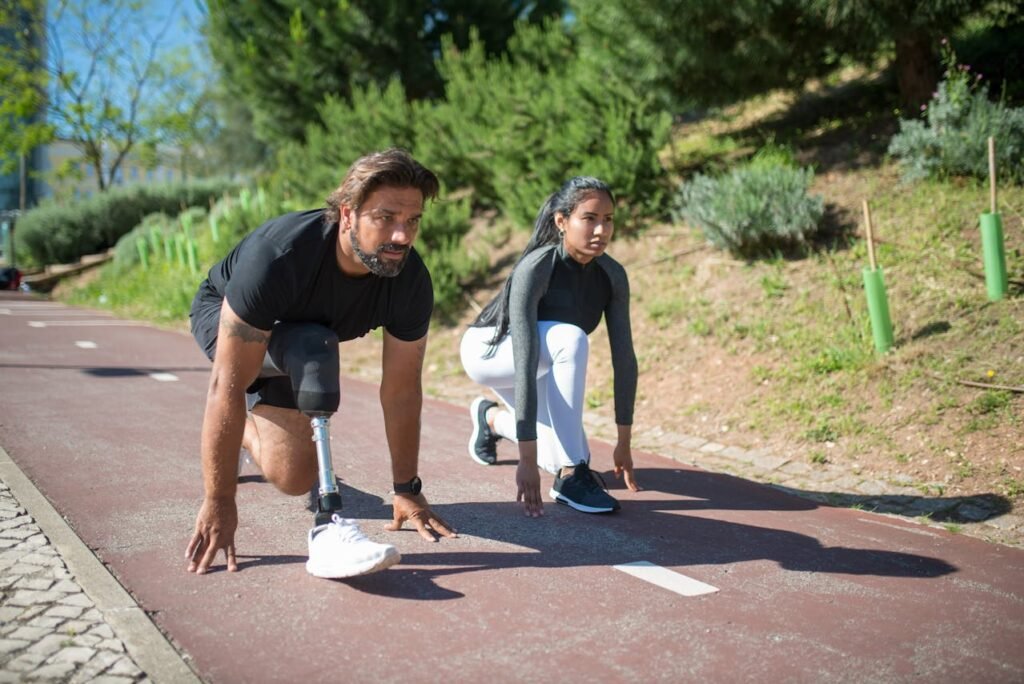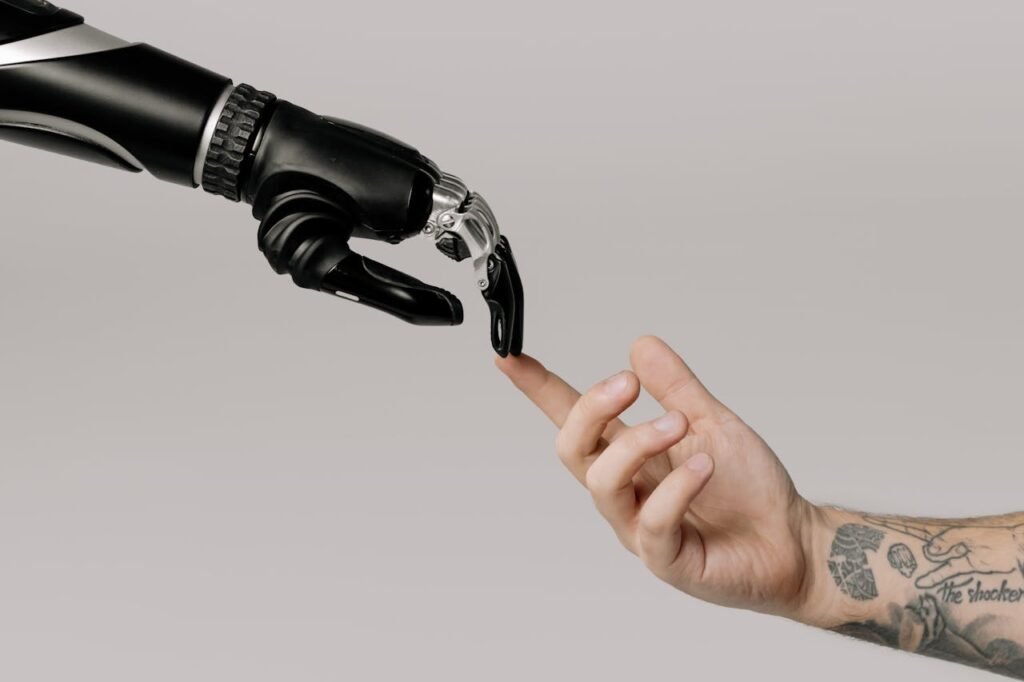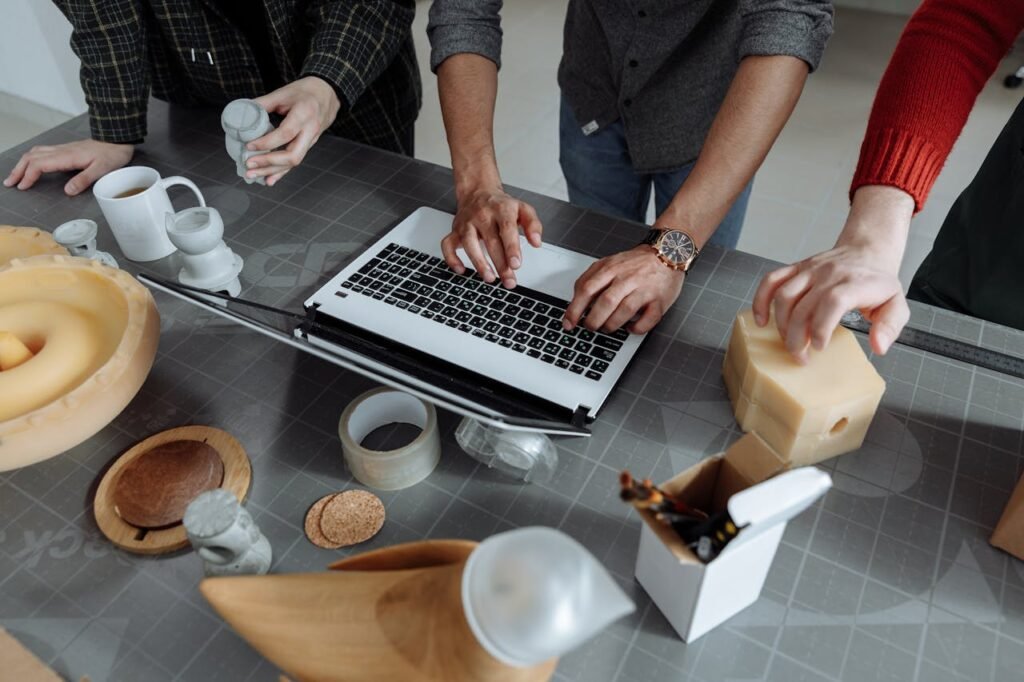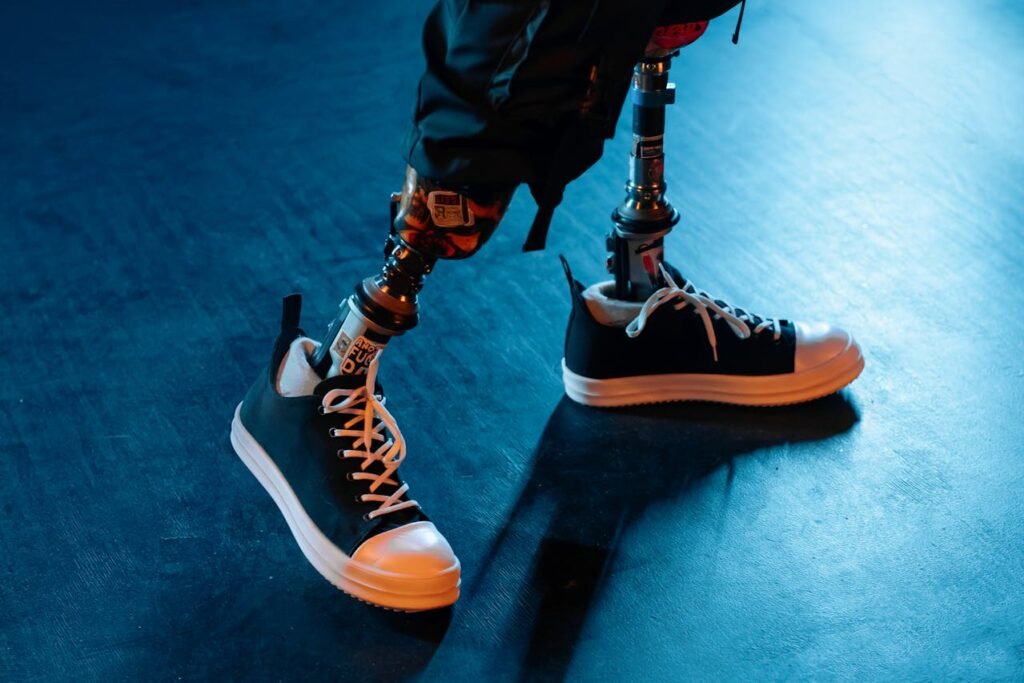Prosthetic technology has transformed the lives of individuals with limb loss, restoring mobility, independence, and confidence. For those seeking leg prosthetics, the choice between an above-knee and below-knee prosthetic is critical. Each type is uniquely designed to meet specific functional and lifestyle needs, and understanding their differences can help you or your loved one make an informed decision.
This guide dives into the key distinctions between above-knee and below-knee prosthetics, exploring how they work, their benefits, and the factors to consider when choosing the right solution.
Understanding Above-Knee Prosthetics
Above-knee prosthetics, also known as transfemoral prosthetics, are designed for individuals who have lost their leg above the knee joint. These devices are more complex because they need to replicate both the knee and the lower leg’s movement, providing stability, balance, and functionality.
The Anatomy of an Above-Knee Prosthetic
An above-knee prosthetic typically consists of four main components: the socket, the knee unit, the pylon, and the foot. The socket connects the prosthetic to the residual limb and is custom-fitted to ensure comfort and stability.
The knee unit is the centerpiece, enabling users to bend and extend their leg during walking or sitting. Advanced knee units may include microprocessors and hydraulic systems for smoother, more natural movements.
The pylon acts as the structural frame, connecting the knee to the foot. The foot, often made from lightweight materials like carbon fiber, provides the final point of contact with the ground and is designed to mimic natural foot movements.
Functional Benefits of Above-Knee Prosthetics
Above-knee prosthetics are engineered to restore mobility and allow users to perform daily activities, from walking to climbing stairs.
Advanced models with microprocessor-controlled knees offer features like variable resistance, which adjusts to different terrains and speeds, making walking more efficient and less tiring.
These prosthetics also play a crucial role in maintaining balance, especially when standing or pivoting. By replicating the knee’s complex movements, they enable users to regain a sense of normalcy in their daily routines.

Understanding Below-Knee Prosthetics
Below-knee prosthetics, or transtibial prosthetics, are designed for individuals who have lost their leg below the knee joint. Since the knee remains intact, these prosthetics primarily focus on replicating the functions of the lower leg and foot, making them less complex than above-knee models.
The Anatomy of a Below-Knee Prosthetic
A below-knee prosthetic consists of three main parts: the socket, the pylon, and the foot. The socket fits around the residual limb and is secured using suspension systems like vacuum seals or straps.
The pylon provides structure and connects the socket to the foot. The foot component offers shock absorption, stability, and movement, often using energy-return systems for added efficiency.
Functional Benefits of Below-Knee Prosthetics
Below-knee prosthetics are generally easier to use than their above-knee counterparts, as they don’t require a mechanical knee joint. This simplicity allows users to walk with a more natural gait and perform a wide range of activities with less effort.
These prosthetics are particularly effective for individuals who lead active lifestyles, enabling them to engage in sports, outdoor activities, and demanding work environments.
Lightweight designs and responsive feet make below-knee prosthetics an ideal choice for those seeking mobility with minimal restrictions.
Key Differences Between Above-Knee and Below-Knee Prosthetics
While both above-knee and below-knee prosthetics are designed to restore mobility, their differences go beyond anatomy. The unique challenges posed by the presence or absence of the knee joint affect their design, functionality, and how they are used in daily life.
Complexity and Functionality
The most significant difference lies in the complexity of the prosthetic. Above-knee prosthetics require a mechanical or electronic knee joint to replicate the natural bending and extending motion.
This added complexity makes them more advanced and often more expensive. The inclusion of microprocessors in high-end models enables real-time adjustments, making movements smoother and reducing the mental effort needed to control the prosthetic.
In contrast, below-knee prosthetics do not require a knee joint. The simplicity of their design makes them lighter, easier to control, and generally more affordable. The absence of a mechanical knee means that users retain a more natural gait and expend less energy during movement.
Energy Consumption
Using an above-knee prosthetic requires more physical effort compared to a below-knee prosthetic. The mechanical or microprocessor-controlled knee must be actively engaged during each step, which can lead to higher energy expenditure.
Users often need time to build strength and endurance when adapting to an above-knee device.
Below-knee prosthetics, on the other hand, rely on the user’s intact knee to perform most of the movement. This natural engagement of the remaining limb reduces energy consumption, making walking and other activities less tiring.

Adaptability to Terrain
Navigating different terrains is another area where the two types of prosthetics differ. Advanced above-knee prosthetics, especially those with microprocessor-controlled knees, excel at adapting to uneven ground, slopes, and stairs.
These devices provide variable resistance and real-time adjustments, offering users stability and confidence in diverse environments.
Below-knee prosthetics, while effective, rely on the user’s natural knee for terrain adaptation. This can make them slightly less versatile in challenging conditions, though their lighter design often compensates by reducing strain.
Factors to Consider When Choosing a Prosthetic
Choosing between an above-knee and below-knee prosthetic depends on several factors. These considerations are vital for ensuring the best possible outcomes for users, both functionally and emotionally.
Level of Amputation
The most obvious factor is the location of the amputation. For individuals with an above-knee amputation, a transfemoral prosthetic is the only option. Similarly, those with a below-knee amputation will use a transtibial prosthetic.
However, the specific design and components of the prosthetic can vary widely depending on the length of the residual limb, the condition of the muscles, and the user’s overall health.
Lifestyle and Activity Level
A person’s daily activities and lifestyle goals significantly influence their prosthetic choice. For those with active lifestyles, below-knee prosthetics often provide the mobility and responsiveness needed for sports, hiking, or demanding work environments.
Above-knee prosthetics, while versatile, require more adaptation and may be better suited for moderate activity levels unless advanced models are used.
At Robobionics, we work closely with users to understand their goals and recommend prosthetics tailored to their routines, ensuring they regain independence and confidence in their daily lives.
Financial Considerations
Cost is another critical factor. Above-knee prosthetics, particularly those with microprocessor knees, tend to be more expensive than below-knee models due to their complexity and advanced features.
It’s important for users to weigh the benefits of high-tech options against their budget and long-term needs.
Many organizations, including Robobionics, offer financing options, partnerships with insurance providers, and support programs to make prosthetics accessible to a wider range of users.

The Role of Technology in Enhancing Prosthetics
The integration of technology has revolutionized both above-knee and below-knee prosthetics, enabling features that improve functionality, comfort, and user experience. From microprocessor-controlled knees to energy-return feet, advancements are helping users achieve levels of mobility that were once unimaginable.
Microprocessor-Controlled Knees
For above-knee prosthetics, microprocessor technology is a game-changer. Sensors embedded in the prosthetic continuously monitor the user’s movements, adjusting the knee’s resistance in real time.
This allows for smoother transitions between walking, standing, and climbing stairs, reducing the mental and physical effort required to control the prosthetic.
At Robobionics, our advanced knee units are designed to offer unparalleled stability and adaptability, giving users the confidence to navigate various environments with ease.
Energy-Return Feet
Both above-knee and below-knee prosthetics benefit from energy-return feet, which store and release energy during movement. These feet are made from lightweight materials like carbon fiber, providing a natural and responsive feel.
For active users, energy-return feet enhance performance by mimicking the propulsion of a natural step, making activities like running and jumping more efficient.
Rehabilitation and Emotional Adaptation
Whether using an above-knee or below-knee prosthetic, rehabilitation is a vital step in helping users regain mobility and confidence. It involves not only physical training but also emotional support, as adapting to a prosthetic requires time, patience, and encouragement. For businesses, offering comprehensive rehabilitation programs can greatly enhance user satisfaction and long-term success.
Physical Rehabilitation
Rehabilitation begins with helping users master the basic movements of their prosthetic. For above-knee users, this often involves learning to control the mechanical or microprocessor knee, which can feel unfamiliar at first. Training focuses on balance, weight distribution, and developing a natural gait.
Below-knee users typically face fewer challenges, as the intact knee joint simplifies movement. However, they still benefit from exercises that build strength and coordination, particularly if their activity level is high.
Businesses can enhance rehabilitation by providing gamified training programs, where users practice walking, climbing stairs, or performing everyday tasks in an engaging, interactive format. At Robobionics, we prioritize making rehabilitation a positive experience, ensuring users feel supported at every step.

Emotional Adaptation
Adapting to a prosthetic is as much an emotional journey as it is a physical one. Many users face feelings of frustration or self-consciousness, particularly in the early stages of using their prosthetic.
Emotional adaptation involves overcoming these barriers and embracing the prosthetic as a part of their identity.
Businesses can play a significant role by fostering peer support networks, where users can connect with others who have undergone similar experiences. Hearing success stories and sharing challenges in a supportive environment can help users build resilience and confidence.
Encouraging Independence
Rehabilitation is ultimately about empowering users to live independently. For above-knee users, this might mean mastering the use of their prosthetic on uneven terrain or during high-energy activities. For below-knee users, it could involve engaging in sports, work, or recreational activities without limitations.
By offering resources tailored to different levels of amputation and activity goals, businesses can help users achieve their potential. At Robobionics, we focus on equipping users with the skills, knowledge, and confidence they need to thrive.
Actionable Insights for Businesses
Businesses in the prosthetics industry have a unique opportunity to impact lives profoundly. By addressing the specific needs of above-knee and below-knee users, companies can enhance their offerings and build lasting relationships with their customers.
Customization Is Key
Every user’s journey is unique, and customization is crucial to meeting individual needs. Offering modular components, adjustable designs, and personalized fittings ensures that users receive a prosthetic tailored to their anatomy and lifestyle. Advanced fitting technologies like 3D scanning can further improve accuracy and comfort.
For above-knee users, customization might involve selecting a microprocessor knee with features suited to their activity level. For below-knee users, it could mean choosing an energy-return foot optimized for their favorite sports or daily routines.
Education Empowers Users
Many users, especially first-timers, feel overwhelmed by the options and technology involved in prosthetics. Businesses can address this by providing clear, accessible educational resources.
Workshops, videos, and one-on-one consultations can help users and their families understand how their prosthetic works and what to expect during the adaptation process.
Robobionics emphasizes education as a cornerstone of our approach, empowering users with the knowledge they need to make informed decisions and use their prosthetic effectively.

Invest in Support Services
A prosthetic is a lifelong companion, and users need ongoing support to maintain and maximize its functionality. Offering accessible repair services, routine check-ups, and software updates ensures that users continue to benefit from their device over time.
For businesses, building a robust support system isn’t just about providing technical assistance—it’s about creating a sense of trust and reliability that keeps users engaged and satisfied.
Emotional and Social Impact
Above-knee and below-knee prosthetics do more than restore physical abilities—they change lives in profound emotional and social ways. For users, regaining mobility often means reclaiming their independence and rebuilding their confidence in social interactions.
Reconnecting with Activities
One of the most rewarding aspects of using a prosthetic is the ability to return to activities that bring joy and fulfillment. Whether it’s dancing, hiking, or playing with grandchildren, these moments are milestones in a user’s journey.
Businesses can support this by designing prosthetics that enable diverse activities, ensuring users can pursue their passions without limitations.
At Robobionics, we celebrate these achievements with our users, highlighting their stories as a source of inspiration for others.
Shaping Public Perception
The use of advanced prosthetics also plays a role in challenging societal perceptions of disability. When users confidently navigate their world with cutting-edge devices, they help normalize prosthetic use and demonstrate the possibilities of modern technology.
Businesses can contribute by showcasing success stories and fostering inclusive narratives. Initiatives like awareness campaigns or partnerships with advocacy groups can amplify the impact of prosthetic technology, inspiring both users and the broader community.

Conclusion
The choice between an above-knee and below-knee prosthetic is deeply personal, shaped by an individual’s unique circumstances, goals, and preferences. Understanding the key differences and uses of each type is the first step toward making an informed decision.
For businesses, the journey doesn’t end with delivering a prosthetic—it’s about providing ongoing support, innovation, and care that empowers users to live life to the fullest.
At Robobionics, we’re committed to creating solutions that meet the highest standards of functionality and user satisfaction, helping individuals regain mobility, independence, and confidence.




Pingback: Elevate Your Mobility with Top-Rated Above Knee Prosthetics – Prosthetics Blog